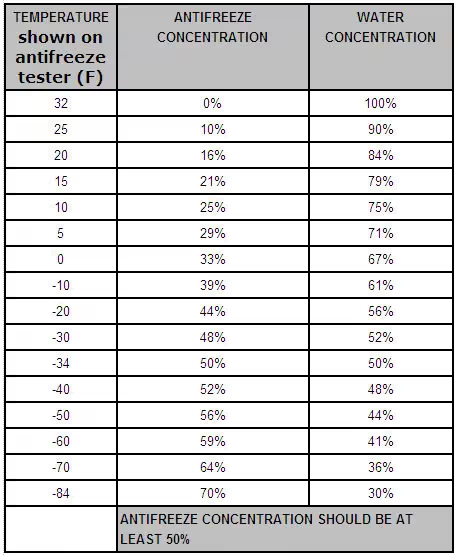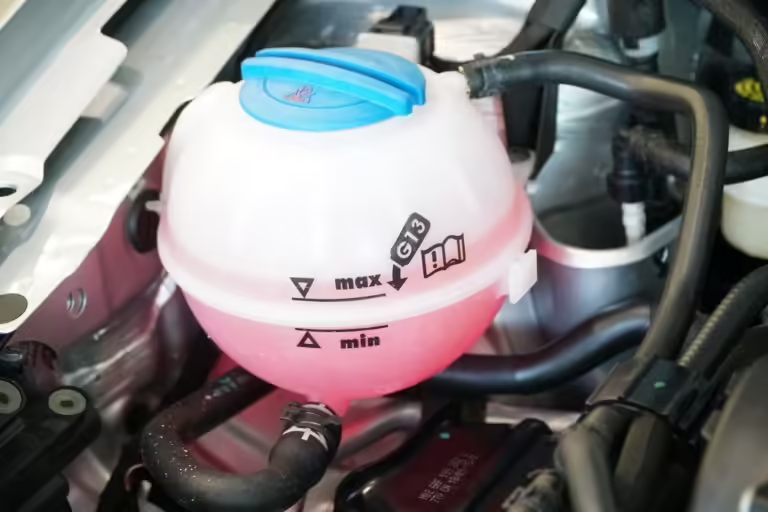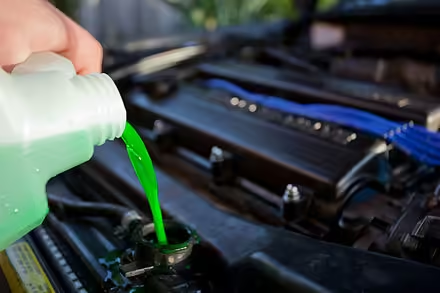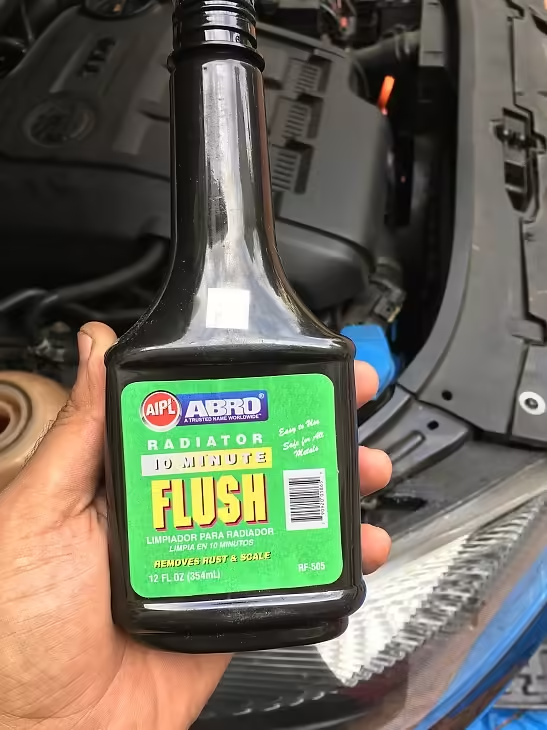The weather in India is hot, and during a summer the heat makes cars vulnerable, especially their cooling systems. The cooling system is thus important if one is to avoid an engine getting too hot and thus needing expensive repairs. Regardless of whether you are driving your car in the hot climate of Rajasthan and sweeping hot sand or amidst the slippery roads of Kerala and high humidity, a maintained cooling system is beneficial to run your car smoothly and efficiently.
In this blog, we’ll give you advice on what you can do to prevent your car from overheating in the summer and keep it in the best working condition it can be.
1. Understand How the Cooling System Works
As you prepare to join the bandwagon of car enthusiasts giving tips on how to maintain cars, you need to take your time and consider how the cooling system of your car works out. The elements of the system mainly include the radiator, water pump, thermostat, coolant, and hoses. Its function is to maintain the engine temperature by circulating water replenished through the engine, taking heat, and expelling it into the air through the radiator.

This system is very vital during the summer period when there is a tendency for the engines to get out of control through overheating. During the summer period, the cooling system has to struggle a lot to regulate the temperatures of the engine, thus making it more sensitive to regular maintenance.
2. Use the Right Coolant Mixture
Coolant is an essential part of your car’s system, as it helps the engine not to get too hot. Most cars, when requiring a coolant refill, advise you to mix half coolant-antifreeze with half water. In India, with its wide-ranging climatic conditions, this mixture helps to ensure your engine is adequately protected for the climate prevailed.

But another word of caution is that if you live in a very hot climate, it is recommended to ask your mechanic if this coolant ratio is suitable for your climate. Proper type and combination of the coolant make the system run efficiently and check for any instances of overheating.
3. Regularly Check Coolant Levels
The easiest but very effective method of keeping your car’s cooling system healthy during hot weather is by checking the coolant level frequently. This can be achieved by just getting under the bonnet of the car and identifying the coolant tank that most contain Minimum and Maximum signs.

Check that the coolant level is always lying within these two dials. In case its level is low, fill it with the right combination of the coolant. It is also advisable to carry along with you excess coolant in the car, particularly when on long journeys.
4. Inspect the Radiator and Cooling System Components
The radiator of a car plays a very important role in cooling the engine; therefore, one should make sure that it is cleaned from debris planted on it. Dirty air will blow debris, dust, insects, and dirt over the fins of the radiator, blocking the airflow and making the engine generate excessive heat.

It is also important that the radiator be checked frequently and cleaned using a brush or high-pressure water. Pay attention not to bend or pinch the thin fins. Other areas contain the same potential for cracks or leaks, for example, hoses that should also be inspected. If all or any part of the cooling system is damaged or worn out, it should be replaced with a new one before it causes more issues.
5. Flush the Cooling System Periodically
Due to the time it possesses, rust, scale, and other impurities may find their way into the coolant of your car. This makes it less effective, and a device can overheat. This is why it is always recommended that the cooling system be sometimes flushed to ensure it meets its maintenance goals.

Rinsing means emptying the old coolant and washing the many parts of the cooling system, including the radiator, with a coolant flush chemical and then filling with the new coolant. This should be done once within a year or two or as recommended in the car’s owners manual.
6. Check the Thermostat
This means that the thermostat regulates the amount of coolant to be pumped to the radiator. When the engine reaches a certain temperature, the thermostat will open. This lets the coolant circulate and drain heat away from the engine. If the thermostat is either bad or stuck closed, then you can have overheating because the coolant cannot circulate properly through the system.
Among the severe effects of a defective thermostat, much more especially when the automobile’s engine is under pressure in hot weather. Maintenance, including checks and a proper change of a faulty thermostat, is important for avoiding overheating of the car, besides guaranteeing proper working of the cooling system.
7. Keep an Eye on the Temperature Gauge
Anyone who owns a modern car will know that most of the cars come fitted with an instrument cluster that can give the temperature of the engine. It is a good practice to check this gauge during summer while on the roads, of course.

When the pointer invades the reddish line or the engine temperature warning lamp starts to glow, the suspicion arises that the engine is getting hot. Such circumstances should make certain to stop the car in a safe area or a parking lot and switch off the engine. The cooling system should be checked only after the engine is allowed to cool; simply remove the bonnet.
8. Drive Smartly in Hot Weather
The manner in which a car is operated to a great extent affects the cooling system of the car. Driving too aggressively in hot weather should be avoided since this will add pressure on the engine and cause it to swell. Rather, drive gently and steadily and do not accelerate sharply or brake heavily.

Also, do not drive during the hottest periods of the day, between 12:00 pm and 3:00 pm IST. If at all possible, it is advisable to schedule your trips during the early morning or in the evening when temperatures are low. This helps free the cooling system from extra work and consequently minimizes overheating of car parts.
9. Park in the Shade
Effective technique of safeguarding your car’s cooling system, particularly during the hot weather, and that is by parking the car in a shaded area. When the vehicle is exposed to direct sunlight, the engine tends to get hot, and then when you begin driving, it is hard for the cooling system to manage the temperature.

In case of lack of shade, consider using a sunshades for the windshield to keep the temperature in the car low. This also helps prevent your dashboard and other interior parts from getting hot, as well as contributing to the improvement of your comfort.
10. Use the AC Wisely
Wisely I continued driving the air conditioning or the AC in a hot weather condition, which in turn puts load on the engine, thus leading to heat buildup in the event that the cooling system is not very efficient. Even when using the AC, the inside of the cabin is fine, but it is advisable to check on the engine temperature when using it for a long time, especially when stuck in traffic.

But in case you see the temperature rising, it may be advisable to shut down the AC and open to allow the engine to cool up. Another and which can also help in decreasing the load on the unit is the recirculate mode, which, rather than fetching the hot air external to the automobile, cools the air that has been previously conditioned in the interior of the automobile.
11. Get Your Car Serviced Regularly
This means that to extend the lifespan of your car’s cooling system, it is recommended to have it checked on a regular basis. Make regular repairs with an experienced mechanic in order to check out the status of the radiator, hoses, water pump, and coolant.

These include, during a certain period of the service, the mechanic observing other signs that may cause the vehicle to overheat; they include fluid leaks, loose belts, or a defective water pump. Such complications, if not attended to earlier, may develop into more severe ones on later days.
12. Consider a Cooling System Upgrade
It may be time to think about upgrading the cooling system for a new one if a car is frequently used in specific severe driving conditions or the vehicles are old-model cars. This may involve fitting a bigger trunk space or a different profile to the radiator, fitting an electric fan, or even changing the cooler to a high-performance type.
Although these upgrades are not cheap, they can provide outstanding increases in the cooling efficiency of the car, especially in hot climates. The above is especially of huge importance to anybody who engages in cross-country travel or anyone who operates a vehicle for prolonged durations in scorching wild areas.
Conclusion
India’s hot and humid climate puts a lot of strain on the vehicle and more so on the car cooling system. If you consider these tips on cooling system maintenance, you will enhance the efficiency of your automobile with the result of optimum performance in the hottest weather conditions.
Daily inspections, proper coolant choice, proper driving behavior, and continual servicing are all measures that will help to avoid engine overheating and therefore ensure that your car has a long life.
Investing some time and effort to look after the car’s cooling system will go a long way in avoiding some expensive costs in the future, as well as making certain that your car will still run efficiently no matter the temperature outside.
Find easy-to-understand car reviews, maintenance tips, and helpful advice at My Car Wisdom. Whether you’re buying your first car or know a lot about cars, we’re here to help you make the right choice. Check it out today!
Raja Yadav, the content writer at My Car Wisdom, brings a unique voice and style to our blog. With a knack for storytelling and a keen eye for detail, Raja ensures that every piece of content is informative, engaging, and easy to understand. His focus is on delivering high-quality articles that cater to both novice car owners and seasoned automotive enthusiasts.




